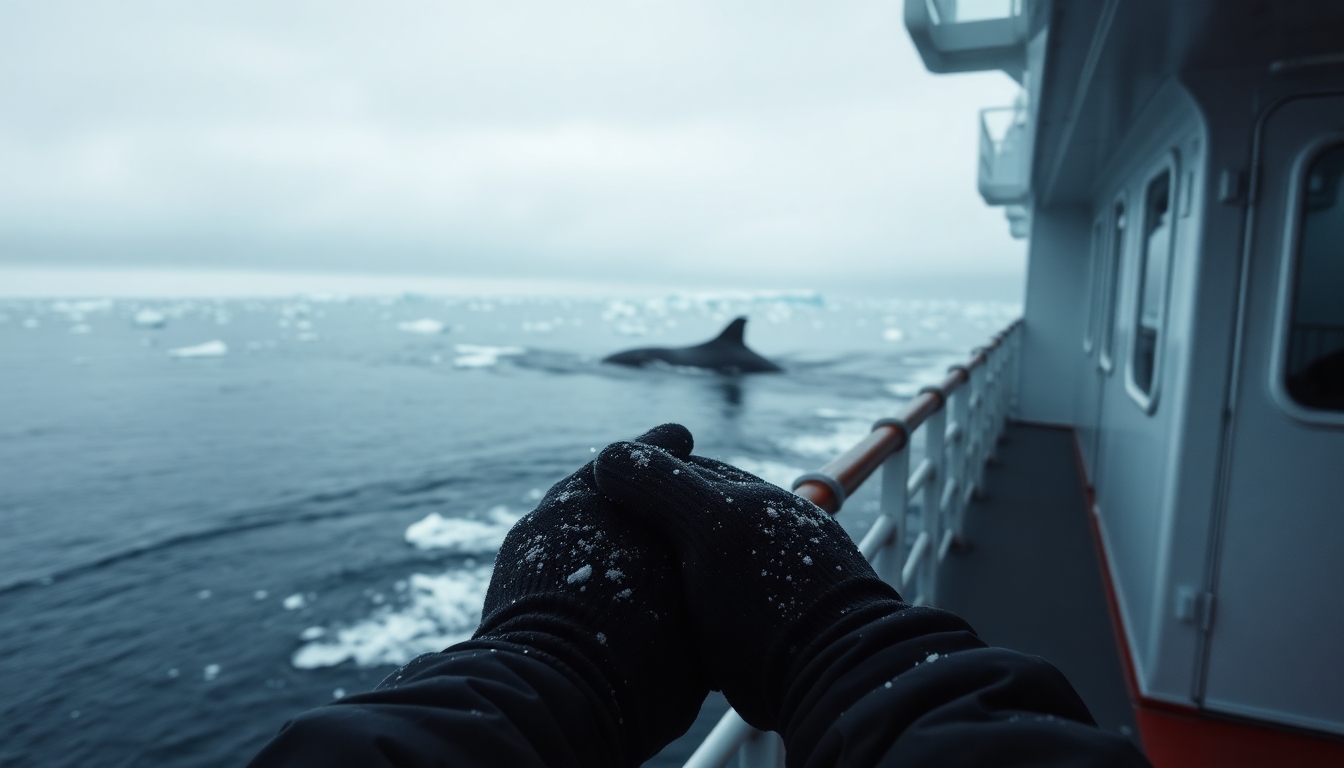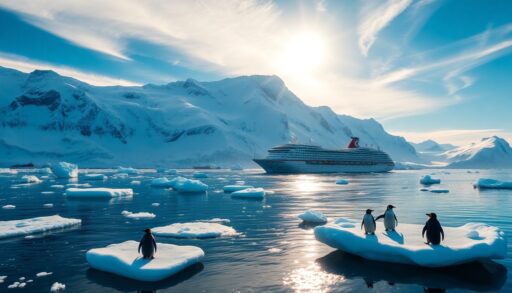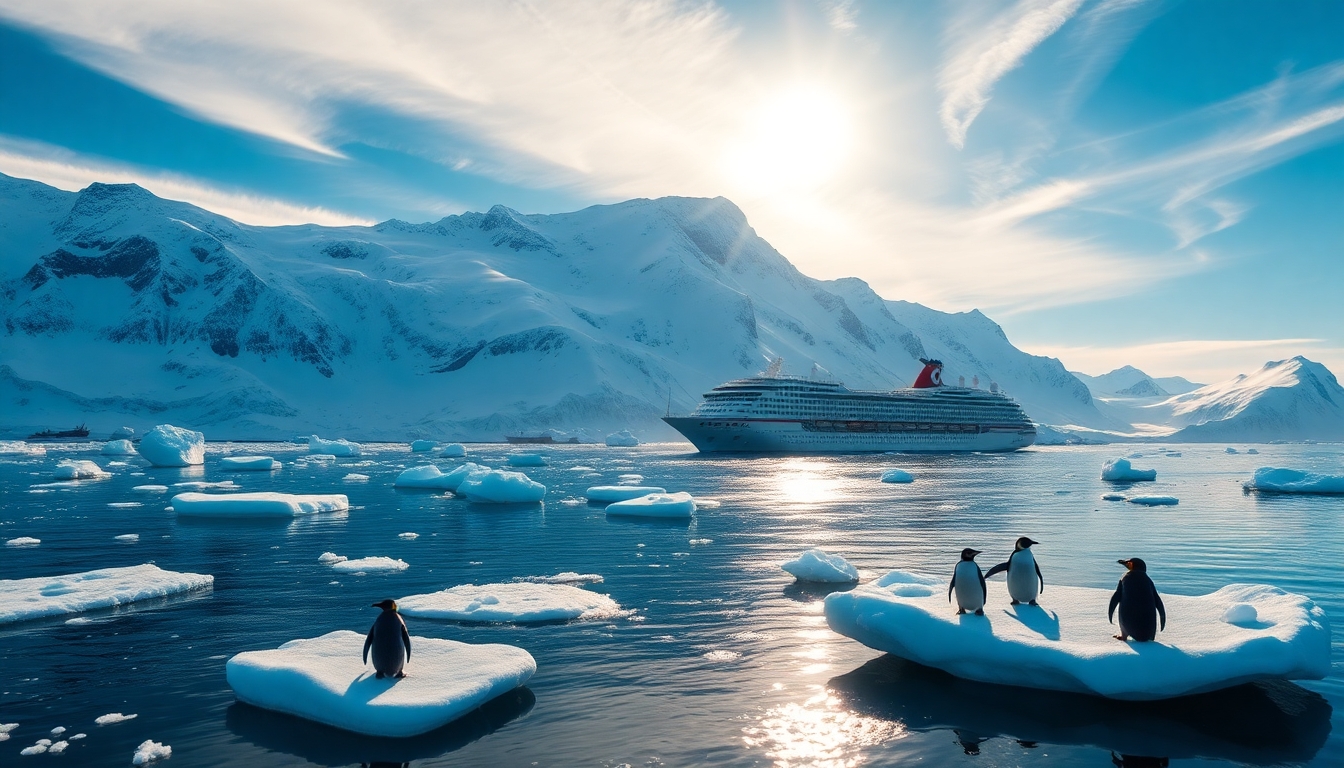Antarctica welcomes only 140,000 visitors annually during its brief November-March season, with temperatures ranging from -5°C to 2°C. The continent’s extreme climate creates distinct travel periods: early season (pristine landscapes), peak season (maximum wildlife), and late season (whale watching). Booking strategies vary dramatically by month. Understanding seasonal weather patterns is essential when planning your Antarctica cruise to maximize both value and experience.
Antarctica’s seasonal weather window
Why timing matters
Antarctica experiences just one tourist season annually, spanning from November to March during the austral summer. Outside this narrow window, the continent becomes inaccessible as darkness descends, temperatures plummet below -40°C, and sea ice expands dramatically, blocking ship access. This limited travel period creates significant implications for booking strategies.
The continent’s weather directly influences demand patterns, with each month offering distinctive experiences. Early season showcases pristine snow conditions and courting wildlife, peak season provides maximum daylight and wildlife activity, while late season excels for whale watching and photography. These weather-driven advantages create varying demand cycles that directly impact availability and pricing.
Understanding these seasonal patterns allows travelers to align their booking strategy with their desired experience, maximizing both value and enjoyment of this extraordinary destination.
Early season (November-December)
Weather conditions and landscape
November and December mark Antarctica’s spring awakening. During this period, temperatures hover between -5°C and 0°C, with crisp, clear days becoming increasingly common. The landscape remains pristine, with snow-covered mountains and massive, sculptural icebergs that have yet to significantly melt. Expedition vessels navigate through breaking sea ice, creating dramatic passages through crystal-blue channels.
Booking implications
This transitional period offers distinct advantages for strategic bookers. Early season departures typically provide lower rates than peak season, with savings of up to 25% possible. However, this pricing advantage comes with higher demand for specific cabin categories.
Key benefits of November-December expeditions:
- Witness spectacular ice formations before significant melting occurs
- Observe penguin courtship rituals and nest-building behaviors
- Experience fewer crowds at landing sites
- Capture pristine snow conditions ideal for landscape photography
- Take advantage of generally lower pricing compared to peak season
For early season travel, the optimal booking window opens approximately 18 months before departure. This timeframe allows access to early booking incentives, which frequently include complimentary amenities like pre-cruise accommodations or onboard credits. These early season journeys appeal particularly to photographers seeking pristine landscapes and wildlife enthusiasts hoping to witness penguin courtship rituals, creating specific demand patterns that influence availability of specialized photography-focused departures.
Peak season (January-February)
Weather patterns and wildlife activity
January and February deliver Antarctica’s most moderate climate, with daytime temperatures typically between 0°C and 2°C on the Peninsula, occasionally reaching 5°C on particularly warm days. These milder conditions, combined with nearly 24 hours of daylight, create ideal circumstances for extensive shore landings and activities. Sea ice reaches its minimum extent, allowing ships to penetrate further south, potentially crossing the Antarctic Circle.
This period coincides with maximum wildlife activity. Penguin colonies bustle with fluffy chicks, while increasing numbers of whales arrive to feed in krill-rich waters. The landscape transforms as snow recedes, revealing fascinating geological formations and creating dramatic contrasts between rock and remaining ice.
Strategic booking approach
Peak season demands the earliest possible booking—typically 18-24 months in advance. This period experiences the highest demand across all cruise operators, with premium cabins often selling out first.
For these prime dates, particularly around holidays, waiting for discounts rarely proves successful. The optimal strategy involves securing accommodations during the initial release period when prices are at their baseline. Families planning travel during school holidays face particularly high competition for limited family-friendly cabin configurations, making advance planning crucial for these peak season adventures.

Late season (March)
Changing weather dynamics
March brings Antarctica’s autumn transition with gradually cooling temperatures averaging -2°C to 2°C. Daylight hours decrease to approximately 16-18 per day, creating dramatic golden-hour lighting conditions that photographers covet. The landscape undergoes significant transformation as ice begins reforming along shorelines and early snow freshens the environment.
Weather patterns become somewhat less predictable, with occasional storms possible. The retreating ice edge concentrates marine life, creating exceptional whale-watching opportunities as humpbacks, minkes, and orcas feed intensively before their northern migration.
Booking advantages and timing
Late season offers unique strategic advantages for flexible travelers. While booking 12-15 months ahead remains advisable for preferred cabins, this period also presents the highest likelihood of last-minute availability.
Operators sometimes offer more significant discounts for these departures, with savings of 30% or more possible when booking either very early or within 60-90 days of departure. This creates a dual-window booking strategy unique to late season—either secure accommodations during the initial release period or remain flexible for potential last-minute opportunities if your travel schedule permits..
Strategic booking tips based on weather preferences
Understanding how your personal preferences align with Antarctica’s seasonal patterns can significantly enhance your booking strategy. Wildlife enthusiasts seeking penguin chick sightings should target January departures, requiring bookings 18+ months ahead due to high demand. Photographers prioritizing pristine snowscapes and dramatic ice formations fare better in November and early December, while those seeking spectacular sunset conditions and whale activity should consider March departures.
Essential factors to consider when timing your booking:
- Cabin preference – suites and premium view rooms sell out 18-24 months in advance
- Special interests – photography and kayaking programs have limited spots
- Medical considerations – motion sensitivity can be an issue any time of season
- Budget limitations – early and late season offer more promotional pricing
- Flexibility – ability to book last-minute can yield significant savings in March
For travelers concerned about sea conditions, it’s important to note that the Drake Passage remains unpredictable throughout the entire season, with rough seas possible at any time. No month guarantees calmer crossings.
Itinerary ambitions also influence timing—those hoping to cross the Antarctic Circle or explore deeper into the Weddell Sea require January-February’s maximum ice melt, while visitors including South Georgia in their journey benefit from December-January’s peak wildlife activity on this sub-Antarctic island. Aligning these weather-dependent goals with your booking timeline ensures the best possible match between expectations and experience, maximizing your Antarctic investment.
Conclusion
Antarctica’s seasonal variations create distinct opportunities requiring different booking approaches. Early season demands advance planning, peak season requires the earliest booking, while late season offers both early reservation benefits and last-minute opportunities. Align your booking strategy with Antarctica’s weather patterns to secure the optimal experience for your polar adventure.







